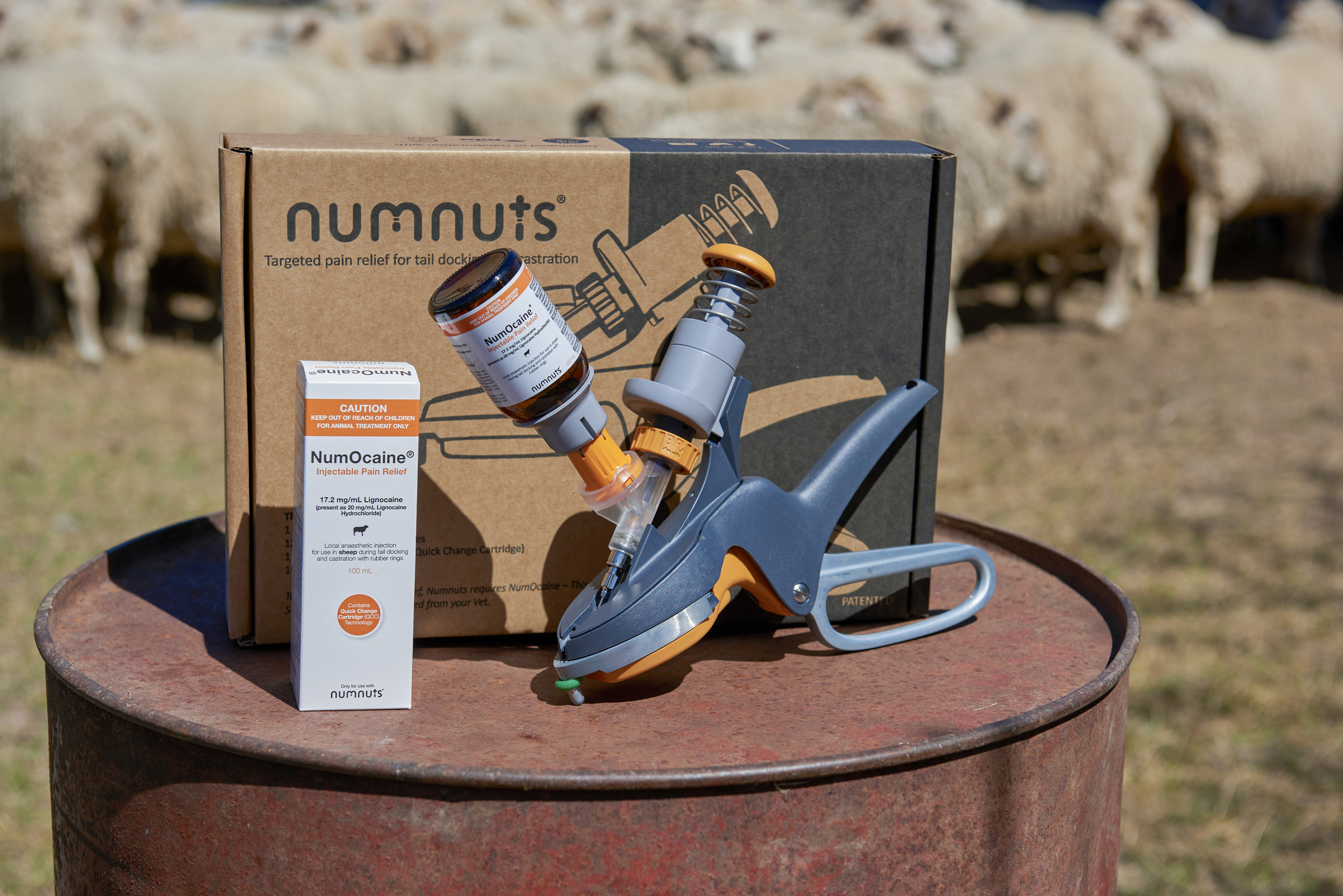By Candice Cottrell BVSc, Dechra Veterinary Products Queensland farm animal territory manager
The use of rubber rings to dock and castrate lambs is standard practice throughout Australia.
Contrary to perception, this practice causes intense acute pain due to the restriction of blood supply (ischemia). Peak pain levels typically occur about 15–45 minutes after ring application.
During this time, lambs display a range of pain-related behaviours, such as kicking, foot stamping, hunching, hopping, lying down and rolling.
After 60 minutes, the rubber ring has largely disabled the nerve function and the level of acute pain decreases, and the slower, chronic pain associated with injury and healing begins. This pain can be alleviated via the administration of anaesthetic or analgesic products.
In general, anaesthetic products provide rapid relief from acute pain but are short-acting, while analgesic products provide longer relief from chronic pain but are less effective in relieving acute pain.
Until recently, there was no readily available method of providing acute pain relief in lambs following ring application.
Numnuts is the world’s first all-in-one rubber ring applicator and targeted pain relief delivery mechanism for lambs. This patented device applies a standard Elastrator rubber ring and then safely injects a calibrated dose of NumOcaine (lignocaine).
Lignocaine is a rapid-acting local anaesthetic which numbs the site within 60 seconds and blocks acute pain for 60 minutes.
The Numnuts system has been extensively evaluated for use in Australia using funding from Meat & Livestock Australia and Australian Wool Innovation. Trials involving more than 15,000 lambs have shown the administration of NumOcaine using the Numnuts device significantly reduces acute pain caused by tail docking and/or castration using rubber rings.
One trial found the delivery of lignocaine using the Numnuts device greatly reduced the degree of acute pain observed in docked lambs to levels similar to undocked lambs.
On two commercial farms, 150 prime lambs aged four to 10 weeks were randomly allocated to three treatment groups: handled in a lambing cradle but not marked (i.e. sham treatment); handled and marked with rubber rings (i.e. untreated); or handled and marked with rubber rings and treated with 1.5 mL of NumOcaine using the Numnuts device (i.e. treated).
Acute pain-related behaviours were observed and recorded at five, 20, 35 and 50 minutes. Postures were observed and recorded at 10-minute intervals from 60 to 180 minutes.
Ring application and acute pain behaviours were significantly more frequent in treated and untreated lambs compared to the control group (P<0.001). Acute pain behaviours in treated lambs were significantly lower than untreated lambs at five minutes (P<0.001) and 20 minutes (P=0.001).
Abnormal postures in treated and untreated lambs were higher at 60, 70, 80, 90 and 150 minutes (P<0.048) compared to sham lambs. There was no difference in posture of treated and untreated lambs at any time point between 60 and 180 minutes, supporting the use of a multi-modal approach for longer-term relief against chronic pain.
On one farm, lambs treated with Numnuts also mothered up more quickly than untreated lambs (P=0.09) and more slowly than sham lambs (P=0.07).
A total of 30 ewe lambs were randomly allocated to three treatment groups: handled in a lambing cradle but not docked (i.e. sham treatment); handled and docked with rubber rings (i.e. untreated); or handled and docked with rubber rings and treated with 1.5 mL of NumOcaine using the Numnuts device.
Posture, movement and feeding behaviour were observed and recorded every five minutes for the first hour and then every 10 minutes for another two hours.
Untreated lambs showed significantly higher levels of pain-related behaviours (P<0.001) and abnormal posture (P<0.001) in the first 60 minutes than treated or sham lambs.
Ideally, this should involve the administration of an anaesthetic product to manage acute pain and an analgesic product to manage chronic pain.
In most situations, best practice pain relief for lambs will involve the concurrent use of a local anaesthetic (e.g. Numnuts) in combination with a buccal or injectable analgesic (e.g. meloxicam).
For more information about how Numnuts helps to deliver gold standard pain relief following ring application, visit the Dechra website.




